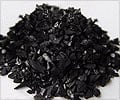Ability to synthesise single-walled carbon nanotubes (SWNTs) with controlled chiralities is an ultimate goal in the field of carbon nanotube research.

Carbon nanotube structure is defined by a pair of integers known as chiral indices (n,m), in other words, chirality.
Chirality defines the optical and electronic properties of carbon nanotubes, so controlling it is a key to exploiting their practical applications, says Professor Esko I. Kauppinen, the leader of the Nanomaterials Group in Aalto University School of Science.
Over the years, substantial progress has been made to develop various structure-controlled synthesis methods. However, precise control over the chiral structure of SWNTs has been largely hindered by a lack of practical means to direct the formation of the metal nanoparticle catalysts and their catalytic dynamics during tube growth.
We achieved an epitaxial formation of Co nanoparticles by reducing a well-developed solid solution in CO, reveals Maoshuai He, a postdoctoral researcher at Aalto University School of Chemical Technology.
For the first time, the new catalyst was employed for selective growth of SWNTs, adds senior staff scientist Hua Jiang from Aalto University School of Science.
These findings open new perspectives both for structural control of SWNTs and for elucidating their growth mechanisms, thus are important for the fundamental understanding of science behind nanotube growth, comments Professor Juha Lehtonen from Aalto University.
Source-Eurekalert
 MEDINDIA
MEDINDIA




 Email
Email





